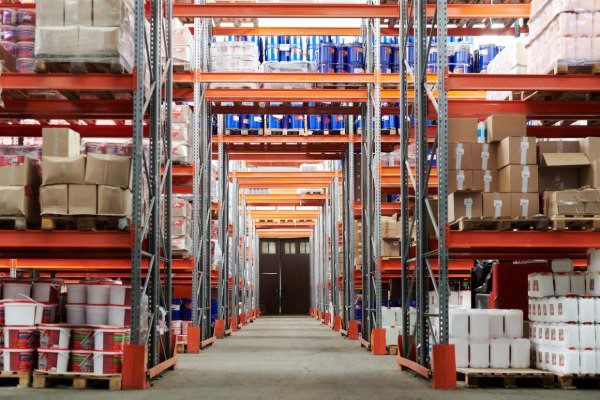Should You Ever Balance Capacity With Demand?
Operations Utopia! A busy factory, or an efficient supermarket, where every machine and person is effectively working on a job 100% of the time. No wasted capacity and maximized output!… It all “sounds” amazing (maybe not for the workers, but that’s a different topic!). And yet, almost always, this is a terrible aspiration with hideous operational consequences all stemming from one of the most crucially misunderstood concepts in operations management.
Balancing capacity with demand
100% capacity utilization whilst meeting 100% of demand, (serving all customers / completing all planned jobs) would be an ideal situation. But in the real world, in all but the most particular of circumstances, this is a dangerous dream, built on a naïve oversight of one of the most important principles in operations management – variation!
Think of the time you went to the supermarket, hoping to quickly grab a few essentials, nothing major. As you head to the cashier you notice it—a massive queue. All the cashiers are busy. The seconds become minutes and you barely move forward, you can’t help but get irritated. How hard can it be to hire the right number of cashiers?!!
Being a customer stuck in that scenario can be quite annoying, especially when the solution seems so obvious. However, from the supermarket manager’s perspective, the decision is more complex than it might seem.
Want to level up your Business Operations Management Fundamentals…
Checkout my 3hour introductory video training course: “Operations Management A-Z”
Balancing capacity with demand: A real-world dilemma.
Let’s look at the smallest possible operation, a neighborhood convenience store with just one cashier. The manager does some analysis and works out that one cashier is perfectly capable of serving 60 customers per hour. This is a nominal “capacity” of 1 served customer per minute, and if the cashier will work 10 hours a day, that means a nominal capacity of 600 customers / day. (Yes, in this example, our cashier is a bit of a super-cashier and requires no breaks.)
Next, the store manager looks at the historical demand data and sees that, on average, the shop gets 600 customers / day in the ten-hour day. What tremendous luck! That’s exactly the capacity of 1 cashier, it’s a perfect fit! However, when put into reality, the manager finds his shop is not running anywhere near as well as he hoped. He finds a near permanent long queue of angry waiting customers queuing for the cashier with many customers giving up and going elsewhere and him having to pay overtime at the end of the day for the cashier to clear the backlog queue….
What happened? It all looked so good on paper!
DISCOVER THE “FORGOTTEN FUNDAMENTALS” OF OPERATIONS MANAGEMENT”
Variation of Demand
Demand inevitably varies due to many different factors. This is true in almost every conceivable industry. Sometimes no customers come to the checkout in a given minute, and sometimes two or more can arrive in a particular minute and the queue grows. But these two things don’t cancel each other out when we have planned our capacity and demand to be matched.
When there are no customers, that capacity is lost, you can’t catch that up, that’s just lost time for the cashier. But then, when two customers arrive in the next minute, well you can’t serve them both at the same time to catch up, inevitably one of them has to wait in the queue. If, by miracle, from that moment onward, new customers did continue to arrive perfectly, one after the other, “exactly” every minute, that 1 person queue would remain there for the rest of the day, with the cashier unable to catch up as her capacity is also a fixed, 1 per minute. Initially the lost time accumulate until we have sufficient queue to keep the productive resource busy (be that a cashier, machine or computer processor). But our long queue of waiting demand persists throughout the day, our capacity never able to catch up as it is “balanced” with the average demand rate of new people/ jobs joining the queue.
The “only” way, balanced capacity and demand “could” work would be IF, a new customer went to the checkout “exactly” every 60 seconds, thereby removing all variation of demand.
But that’s not it. In fact, it’s only half of the problem. Because not only do we have inevitable variation of demand, we also have inevitable variation of capacity.
Capacity Variation
Capacity variation is equally inevitable and damaging to our “balanced” 100% utilization dreams. Even machines have breakdowns, mini problems, and maintenance. Human based “capacity” has much greater capacity variation still. Despite a true “average” capacity of a cashier to be able to serve 60 customers per hour, this doesn’t mean it always take 60 seconds to process a customer. In fact, an exact 60 second service time would almost never occur. Some might take only 30 seconds while some take 5 minutes. This variation contributes to exactly the same problem of accumulated losses and increased queue times as we try to work closer and closer to 100% capacity utilization.
Reducing variation
Reducing demand variation is a massively important and widely underappreciated topic of operations management, but in the supermarket case, it’s not easy to work on. It’s not like supermarkets can start implementing an appointment system, where a customer has to book a cashier every time they want to pay and human capacity variation a simple reality. So, the primary choice of the operations manager as they seek to trade-off unhappy customer queue time and cashier wage bills is how many cashiers to employ and therefore at what % capacity utilization we are really aiming for given that 100% has proven so totally implausible.
Through statistical modelling, we can see that it is a “law” of operations management, queue time starts to drastically increase when we go above 70%-80% capacity utilization, depending on the level of variation in our system. This is known as “The Kingman Law”.
More variation and the situation is worse. That means getting comfortable with seeing the checkout cashier or your expensive machine doing nothing for large portions of time (being “unutilized”, not because of problems but rather because it is waiting for work and enabling us to handle variation of supply and capacity and keep the queue time down to something acceptable to the customers.
Ramping up / down Capacity as required
A slightly advanced method widely used is to have the ability to “vary” your capacity. Supermarkets, for example will have some employees stacking shelves, but if queues start to accumulate, more of them are called over to serve at the checkout counters (assuming sufficient “excess” capacity of checkout counters was also planned for during design!).
Get comfortable with excess capacity
Whether you manage a built-to-order car factory, a telephone call center, or a restaurant kitchen; “planning” your capacity utilization is an essential choice with the eternal temptation to just take on a bit more work or to trim back on capacity, or staffing because you can see that “excess” capacity occasionally waiting.
Should you ever balance capacity with demand?
You should strive be cost effective in the capacity provided to serve your demand, but beware! Variation of demand and capacity is inevitable in nearly every situation, meaning heading towards full capacity utilization will lead to spiraling lead times and queue times causing immense customer dissatisfaction, rocketing inventory levels and associated costs. Plan your desired capacity utilization carefully, if short lead times are required, you must plan excess capacity or have a very effective way of increasing it at short notice in times of need.
Want to level up your Business Operations Management Fundamentals…
My video training course: “Operations Management A-Z”
Crack On!









